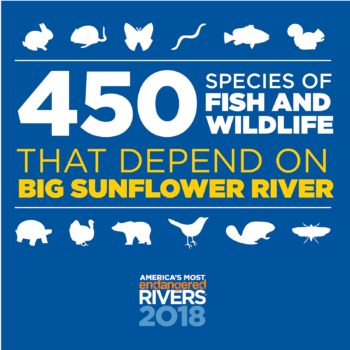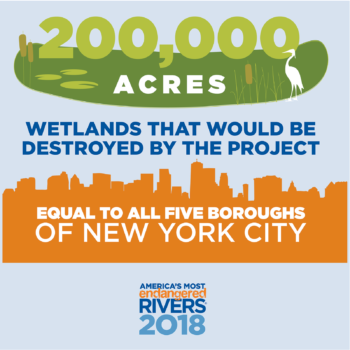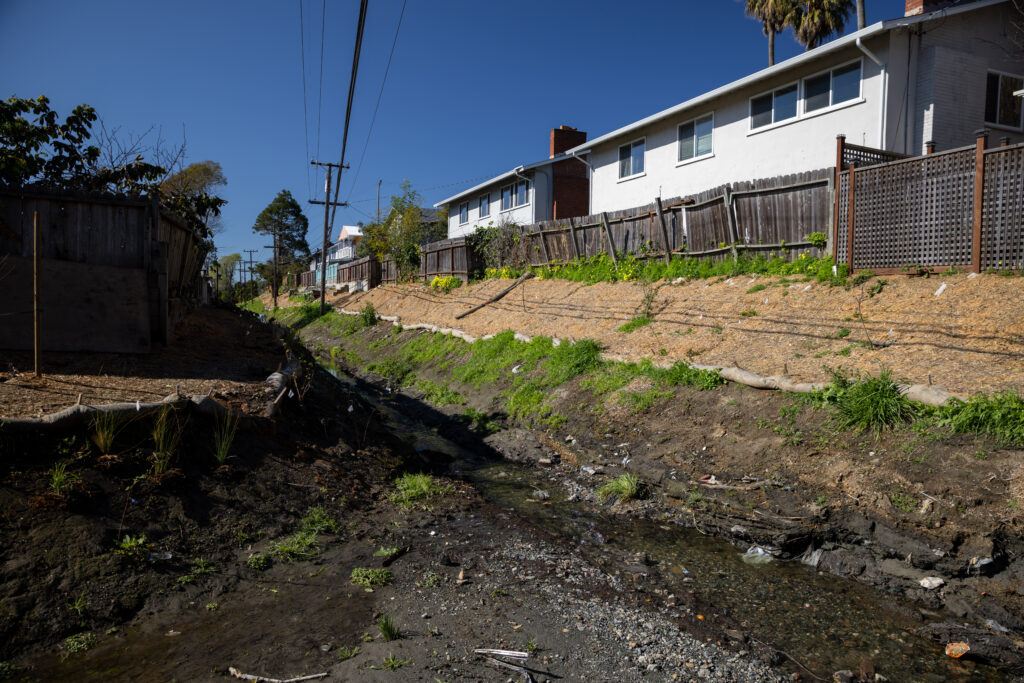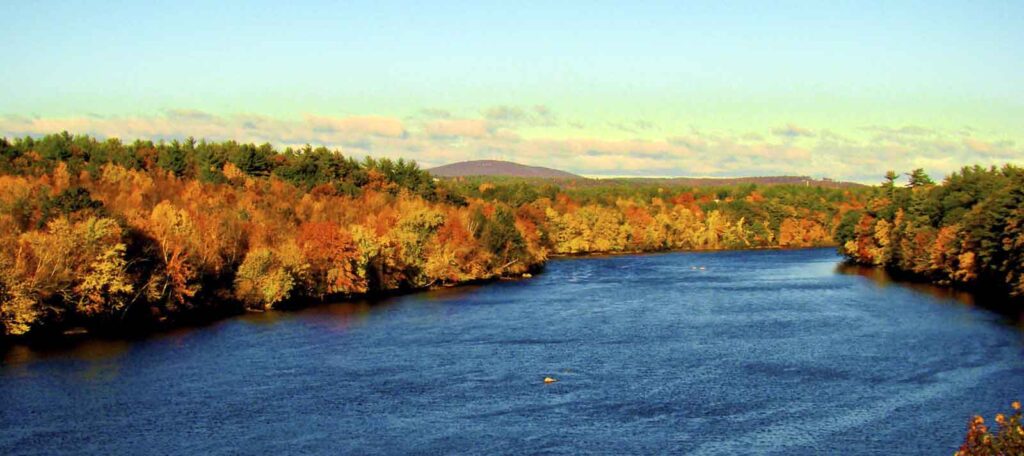Senator John McCain called it “one of the worst projects ever conceived by Congress.”
Former Secretary of the Interior Bruce Babbitt called it “godawful, cockamamie.”
They were talking about the Yazoo Pumps, an Army Corps boondoggle that would devastate Mississippi’s Big Sunflower River and cost taxpayers hundreds of millions of dollars.
Thanks to President Trump and his allies in Congress, this terrible project is back and it poses such a threat that we placed the Big Sunflower River at the top of the list of America’s Most Endangered Rivers® of 2018.
The Big Sunflower River is a special place…

The Yazoo Pumps project would cause a mind-boggling amount of damage…

The Yazoo Pumps project would cost taxpayers at least $300 million. That’s a lot of money…

It’s time to stop this terrible project once and for all.
[su_button url=”https://act.americanrivers.org/page/4999/action/1″ background=”#ef8c2d” size=”4″ center=”yes”]Take action »[/su_button]
In addition to the Big Sunflower River, America’s Most Endangered Rivers of 2018 is a snapshot of some of our nation’s most beloved and iconic rivers in the crosshairs. The list includes:
In our many years of issuing the America’s Most Endangered Rivers report, we’ve seldom seen a collection of threats this severe, or an administration so bent on undermining and reversing protections for clean water, rivers and public health.
Your support is vital as we fight for America’s Most Endangered Rivers of 2018, and rivers nationwide.
[su_button url=”https://act.americanrivers.org/page/5027/donate/1″ background=”#ef8c2d” size=”4″ center=”yes”]Donate today »[/su_button]
Thank you for standing with us.







5 responses to “Why It’s #1: America’s Most Endangered River of 2018”
I live near the structure that was in the design of the Yazoo Backwater Project. I have educated myself on the impacts of pumps or no pumps. The delta farms design areas for the flyaway, but the excessive rainwater trapped, no food can be planted for the fowl. It is all underwater. Pumping out the trapped rainwater will not decrease, but increase the definition of a “wetland”. The COE will not only pump to a level to secure extra wetlands but reforest areas that have been inundated with water for six months now. The prime growing season for hardwoods is now and the trapped floodwater from rains is not only killing trees, wetlands, etc… it’s killing terrestrial animals that have their babies this year. When a suitable water level is obtained the wildlife flourish.
There are communities underwater, farms will not be planted and those employed are going to have no income until next year. The seed the farmers purchased will go unplanted. Homes have been underwater for months. Eagle Lake has been destroy. The pumps will not cost $400 million. That is not true. It’s about half of that. Billions were spent on the MR&T and these designs to prevent and protect are very successful in Arkansas and Louisiana. Mississippi was is the only state that did not get finished.
This event alone will be close to a billion in loses. “Expensive”?…proactively the cost of the pumps at $220 million is a steal. That does not include the trickle down affect of no crops, no hunting licenses purchased, residents will not have money to spend to keep other businesses afloat. Maybe more because we cannot accurately assess the damages because 500,000+ acres are underwater….for over 100 days.
If you are going to publish an article please get the data correct.
The water now going down the Mississippi which drains 41% of the United States will not be affected by the removal of the backwater. The water would be undetectable at Vicksburg.
Please read all the tests and data before you concentrate on one river. Is all you have? One river versus an entire eco system?
Hi “Common Sense”,
There must have been an accident in our system, we’ll work to restore your comment and respond to it with information on how the Yazoo Pumps will indeed harm wetlands, fish, and wildlife on the Big Sunflower River. Sorry about that!
Rebecca, why was my comment not allowed? Why are you hiding the real benefits to life and property the pumps would help protect?
Thanks for your comment and questions. You can learn more about the Yazoo Pumps project and it’s damage to the Big Sunflower River by reading the full report at americanrivers.org/bigsunflower. We will also have a series of blogs coming over the next month that will dive into the environmental harm of the Yazoo Pumps, so please be on the lookout for those.
I need some clarification about what the proposed Yazoo Backwater Area Pumps Project would actually do, and specifically how it would affect the wetlands and wildlife habitat surrounding the Yazoo and Big Sunflower Rivers. I think it would be helpful if, rather than employing the language of outrage and hyperbole, we could provide some maps and some specific descriptions of the lands that would be affected and precisely how they would be affected.
As I presently understand it, at the confluence of the Yazoo and the Mississippi Rivers a control structure has already been built, with gates that can be closed during high-water events in order to prevent the Mississippi from back-flooding up the Yazoo flood plain. The problem is that when the gates are closed, the flow of the Yazoo is blocked and thus begins to inundate its own flood plain. The proposed project would enable the Yazoo’s water to be pumped over this structure and into the Mississippi, thus preventing or mitigating the flooding of the farmlands along the Yazoo flood plain. With a capacity of 14,000 cfs, it would be one of the largest such pump stations ever built.
Considering the amount of money that has already been spent on the project to date, it would seem that without the pumps the already-completed structure would be rendered nothing more than an expensive white elephant. So I understand why Mississippi’s congressional delegation would want this project completed.
But what, specifically, is so objectionable about this project from a conservation standpoint? I’m not wanting to come off as contrarian or some sort of troll; I really just want to have a better understanding. I get the objections based on the cost – this project would be quite expensive, and it may not pass the cost/benefits test, since only a small number of people would actually benefit economically from it. I also get the objections over process – that the present bill would effectively override the Clean Water Act and exempt the project from judicial review. But as for the environmental impact, I’m still trying to educate myself. How would the wetlands and wildlife habitat of the Yazoo and Big Sunflower Rivers be destroyed or otherwise altered? And to what degree? How would simply pumping the Yazoo’s waters over the barrier when the gates are closed destroy so many acres of wetlands and so much wildlife habitat upriver? And would they be permanently destroyed, or merely impacted and deprived of new deposition by the altered flow pattern?